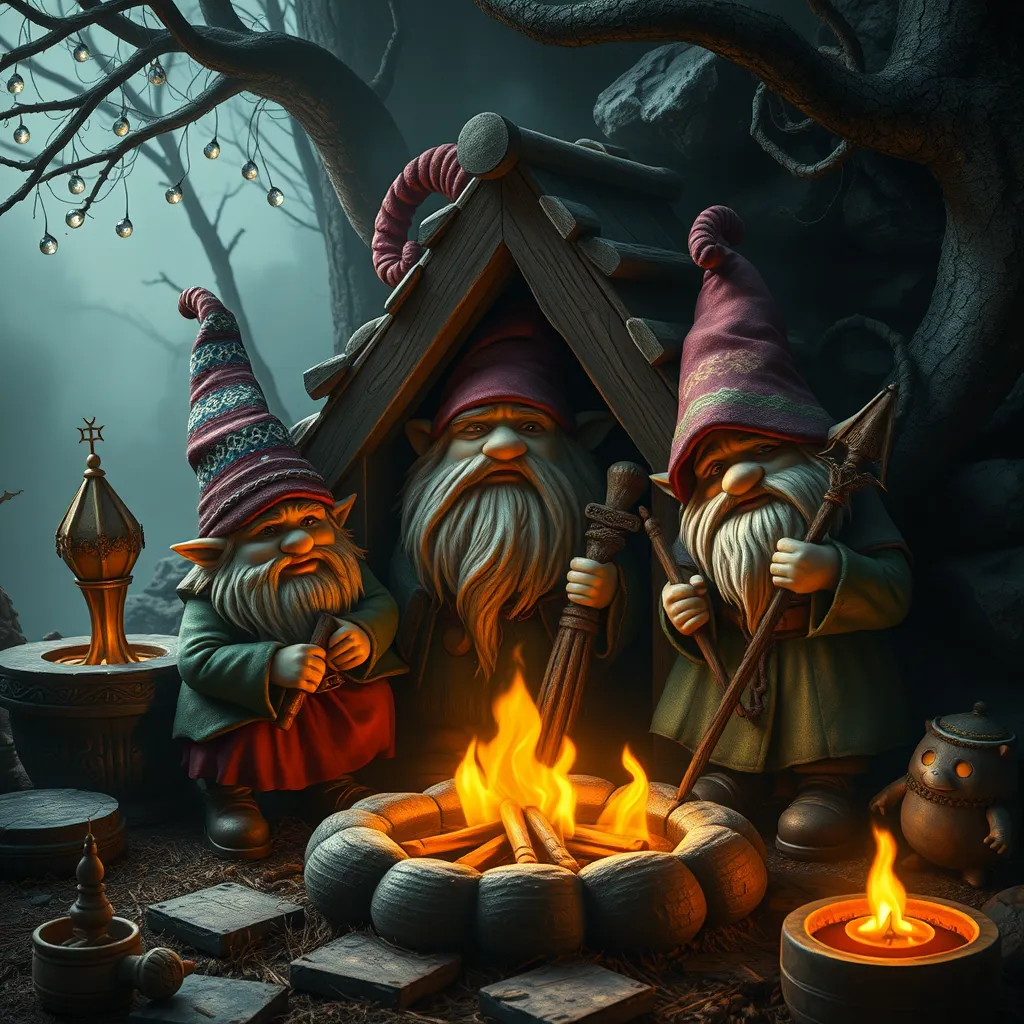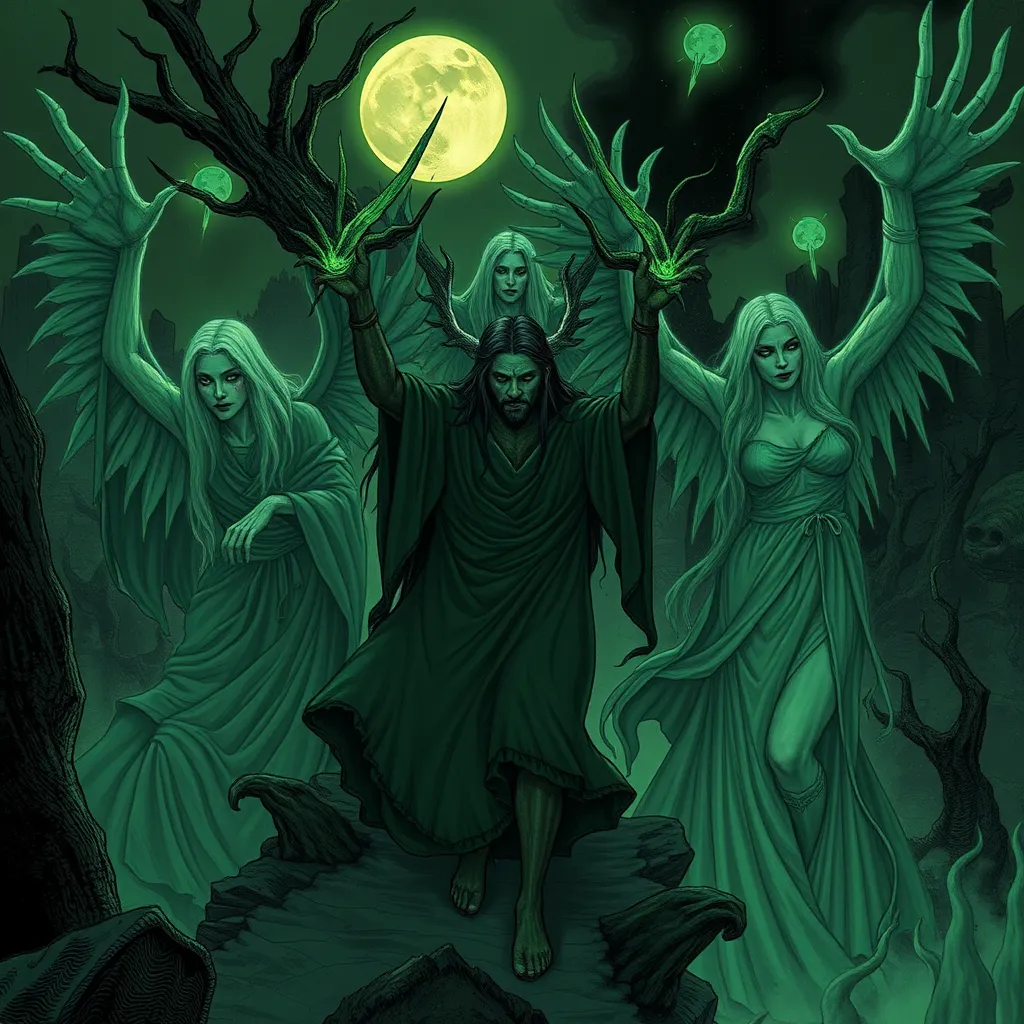Gnomes and the Home: Protectors of the Hearth and Family
I. Introduction
Gnomes have long been a part of folklore and mythology, often depicted as small, wise creatures that inhabit gardens and homes. Their origins can be traced back to various European traditions, where they are considered guardians of the earth and protectors of families. The significance of gnomes varies across cultures, but their role as protectors of the home remains a common thread. This article aims to explore the rich tapestry of gnome mythology and their enduring legacy as guardians of the hearth and family.
II. The Origins of Gnome Lore
The roots of gnome mythology can be found in ancient European traditions. Originally, gnomes were thought to be earth spirits, often associated with the underworld and believed to be protectors of hidden treasures. Over time, their representations evolved, becoming more benign and associated with domestic life.
- Historical Roots: Gnomes are believed to have originated in the Renaissance period, particularly in Germanic folklore, where they were known as “gnomus.”
- Cultural Evolution: Different cultures have adapted the gnome figure; for example, in Scandinavian traditions, they are known as “tomte” or “nisse,” often depicted as helpful household spirits.
- Key Figures and Stories: Tales of gnomes often include characters like the wise old gnome who dispenses advice or the mischievous gnome who plays tricks on unsuspecting humans.
III. Gnomes as Guardians of the Hearth
The hearth has historically been the heart of the home, symbolizing warmth, safety, and family unity. Gnomes are believed to play a crucial role in protecting this sacred space.
- Symbolism of the Hearth: In many cultures, the hearth represents the home’s spirit and the well-being of its inhabitants.
- Roles in Protection: Gnomes are thought to ward off negative energies and ensure the safety of the household, often attributed to their connection with the earth.
- Traditional Beliefs: In some traditions, it is believed that gnomes will bring good fortune and protect families, especially during winter months when the hearth is most vital.
IV. Gnome Characteristics and Traits
Gnomes are characterized by distinct physical attributes and unique personality traits that set them apart in folklore.
- Physical Attributes: Typically depicted as small, bearded men wearing pointy hats, gnomes often have colorful clothing and a whimsical appearance.
- Common Personality Traits: Gnomes are often portrayed as friendly, helpful, and wise, with a penchant for mischief when the need arises.
- Significance of Names: Gnome names often reflect their characteristics or roles, with names like Grumpy or Wise providing insight into their personalities.
V. Incorporating Gnomes into Home Decor
Gnomes have become a popular element in home decor, serving both aesthetic and symbolic purposes. Here are some ways to incorporate gnomes into your home:
- Popular Decor Ideas: Gnome figurines, paintings, and garden statues can add a whimsical touch to various spaces.
- Symbolic Meaning: Placing gnome figurines near the hearth or in entryways is thought to invite protection and good fortune into the home.
- DIY Projects: Creating personalized gnome decorations can be a fun family activity. Consider making gnome plush toys or painting gnome rocks for your garden.
VI. Gnomes in Modern Culture
In contemporary society, gnomes have found their way into literature, film, and art, reflecting their enduring appeal.
- Representation in Media: Gnomes appear in various modern films and books, often depicted in a humorous or fantastical light, such as in “Gnomeo & Juliet.”
- Resurgence of Popularity: The rise of gardening trends and interest in folklore has led to a renewed fascination with gnomes, especially as garden decorations.
- Outdoor Spaces: Gnomes are commonly used in gardens, where they are believed to promote growth and protect plants.
VII. Rituals and Practices to Honor Gnomes
Many cultures have traditional rituals and practices to honor gnomes and invite their protection into the home.
- Traditional Rituals: Setting up small altars with offerings such as food, drink, or trinkets can attract gnomes to your home.
- Seasonal Celebrations: Festivals like Midsummer or Winter Solstice often include elements that honor gnome lore, celebrating the changing seasons and the gnomes’ role in them.
- Offerings and Altars: Many families create special spaces in their homes or gardens where they leave offerings, believing this will invite gnome spirits to protect their household.
VIII. Conclusion
Gnomes hold a special place in the hearts of many, symbolizing protection, warmth, and family unity. Their mythology and lore remind us of the importance of home and the guardianship that comes with it. As we reflect on the enduring legacy of gnome mythology, we are encouraged to embrace these traditions in our modern homes, inviting the whimsical and protective spirit of gnomes into our lives.



